Mohang Beach (모항해수욕장)
12.4Km 2024-04-07
22, Mohang-gil, Buan-gun, Jeonbuk-do
+82-63-580-4413
Mohang Beach is situated in Byeonsan-myeon, Buan-gun, Jeollabuk-do. It is set against the beautiful mountains of Byeonsanbando National Park and the clear waters of the west coast. Unlike many beaches along the west coast, white sand can be found even at low tide and the beach is great for fishing.
Designated a tourist site in December of 2000, the area has been equipped with a family hotel, camping sites, and a seaside cafe. Nearby, there is a mud flat, a population of horned holly trees (Natural Monument No. 122), and a scenic drive.
Bujji (부찌)
12.9Km 2024-04-07
15, Seongsan 2-gil, Gochang-gun, Jeonbuk-do
+82-63-563-3626
This is a place where you can taste duck meat and the representative dish budaejjigae (spicy sausage stew). This Korean dishes restaurant is located in Gochang-gun, Jeollabuk-do. The most famous menu is sausage stew.
Gochang Pansori Museum (고창판소리박물관)
13.5Km 2024-04-06
100, Dongni-ro, Gochang-gun, Jeonbuk-do
+82-63-560-8061
The Gochang Pansori Museum was established in the old residence of ‘Dongni’ Sin Jae-Hyo (a musical theorist and arranger and a sponsor of Pansori) with the aim of honoring the great Pansori singers of the past (including Sin Jae-Hyo) and preserving and developing the indigenous tradition of Pansori. Of the original rooms of the residence only Sarangchae (an annex where men used to study or welcome guests) has been renovated and is open to the public. Right next to Sarangchae is the Dongni Gugakdang (Korean Traditional Music Hall).
Over 1,000 pieces related to Pansori and great local singers are on display at the museum, included personal possessions once owned by Sin Jae-Hyo (penname ‘Dongni’). For those interested in learning more about the traditional art of Pansori music or experiencing high-quality Pansori, the Gochang Pansori Museum is a must-visit travel destination.
Sin Jae-hyo's House (고창 신재효 고택)
13.5Km 2024-04-07
100, Dongni-ro, Gochang-gun, Jeonbuk-do
+82-63-560-2943
Sin Jae-hyo (1812-1884) was a legendary theorist, director, and sponsor of pansori (epic chant). Sin Jae-hyo's House in Gochang was built in 1850, and visitors can observe sarangchae (main room), an old well, and a paulownia tree preserved to this day. Sin was not a singer himself but a pansori enthusiast, and he used wealth to train potential singers and contribute to the growth of pansori. He also compiled and edited six pansori madangs (operas) titled Ttoggi Taryeong, Bak Taryeong, Simcheongga, Jeokbyeokga, Chunhyangga, and Garujigi Taryeong, of which only five are passed down. To honor his contributions and passion for pansori, Dongni Gugakdang was founded behind this house.
Gochangeupseong Walled Town (고창읍성)
13.7Km 2025-01-07
1, Moyangseong-ro, Gochang-gun, Jeonbuk-do
+82-63-560-8067
Gochangeupseong Walled Town was built in 1453 during th reign of Joseon King Danjong to protect the city from foreign invaders. The walls were built by the local civilians, using natural resources as they were available. Also called Moyangseong Fortress, the walled town served a vital role in protecting the southern region, and was designated Historic Site No. 145 on April 1, 1965. The walls are 4~6 meters high and 1,684 meters long, with three gates on the north, east, and west walls, each protected by curved walls. Inside the large area there were 22 government buildings. Restoration work on the wall has been ongoing since 1976.
Gochang-eup Sunghanok Village (고창읍성한옥마을)
13.7Km 2024-08-05
128 , Dongni-ro, Gochang-gun, Jeonbuk-do
+82-63-563-9977
Gochangeupseong Hanok Village is a group of houses once attached to the government office inside the ancient Gochangeupseong Fortress, Gochang-gun, Jeollabuk-do. It consists of seven tile-roofed houses containing 11 comfortable guest rooms with wooden floors, equipped with toilet and AC. There is a yard, and visitors can walk a trail to Gochangeupseong Fortress and ponder the impressive 500 year-old walls. There is a pottery and an embroidery experience center, and Yangpyeong Military Art Museum, Gochang Pansori Museum, and Seonun Golf Course are all nearby. Visitors can use the village’s large parking lot.
Gochang Moyang Fortress Festival (고창모양성제)
13.8Km 2024-07-17
Eumnae-ri, Gochang-eup, Gochang-gun, Jeonbuk-do
+82-63-560-2949
Gochang Moyang Fortress Festival has been held since 1973 to inspire admiration for the construction of the walled town, develop local culture, and encourage love and pride for Gochang residents. Main events include a celebration and memorial ceremony, with additional events ranging from a pansori performance and farming music to folk games and archery. Many people participate in the Dapseongnori event, where participants carry a rock on top of their heads and walk around the fortress three times. Doing this is said to cure all illnesses, grant a long and healthy life, and allow one into heaven.
Gomso Swimteo (곰소쉼터)
13.9Km 2024-04-07
1086 Cheongja-ro, Jinseo-myeon, Buan-gun, Jeonbuk-do
Gomso Swimteo is a restaurant located next to the Gomso Salt Farm, which produces sea salt. The signature dish is the jeotgal jeongsik (salted seafood set menu), featuring nine varieties of salted seafood served with soybean paste jjigae. Customers can also enjoy unlimited refills of salted seafood, similar to a buffet style. Gomso's salted seafood is renowned for its excellent taste, as it is made by marinating freshly caught seafood in Gomso sea salt for over a year.
NABIdream Hanok Stay (한옥펜션 나비의 꿈)
14.2Km 2024-12-24
129 , Naesosa-ro, Buan-gun, Jeonbuk-do
+82-63-582-7651
Butterfly Dream is a modern hanok stay in Naesosa, Byeonsanbando National Park, Jeollabuk-do. The spacious, grassy yard and pine trees add to this place’s tranquility. A variety of guestrooms are offered and most come with a kitchen and individual barbecue area.
Buan Naesosa Temple (내소사 (부안))
15.3Km 2024-10-22
191 Naesosa-ro, Jinseo-myeon, Buan-gun, Jeollabuk-do (Naesosa Ticket Booth)
+82- 63-583-7281
Naesosa Temple was built by Buddhist Monk Hye-Gu in 633 during the Baekje dynasty and was rebuilt by Monk Cheong-Min in 1633 during the Joseon dynasty. The Daeungbojeon Hall was built at this time. In 1986, the temple area was designated as a culturally protected area.
On both sides of the main gate are large fir trees, which also line the path into the temple. Upon reaching the temple itself, the first thing that draws attention is the 1000-year-old Dangsan tree. Long ago, people used the base of the tree as a site of prayer.
Housed in Beomjonggak is a bronze bell that can be found in many Buddhist temples. This particular bell was made during the Goryeo era and is engraved with three images of Buddha, called Samjonsang. The center building of the temple, called Daeungbojeon Hall is also an artistic masterpiece, decorated with splendid colors and designs. The flower Salmun doors featuring lotus and chrysanthemum flowers add another element of traditional beauty to the building.
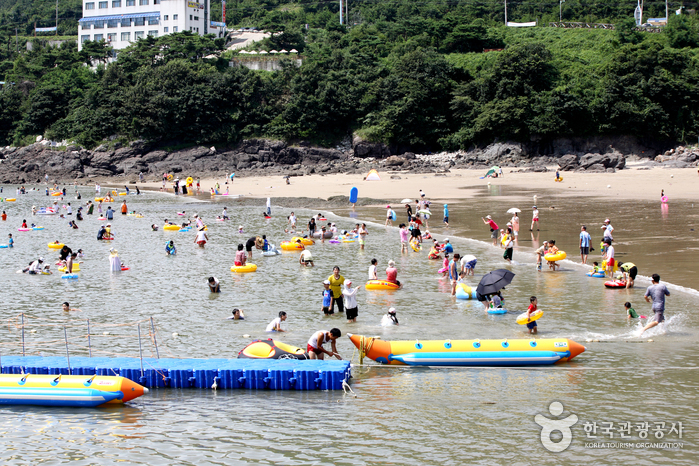
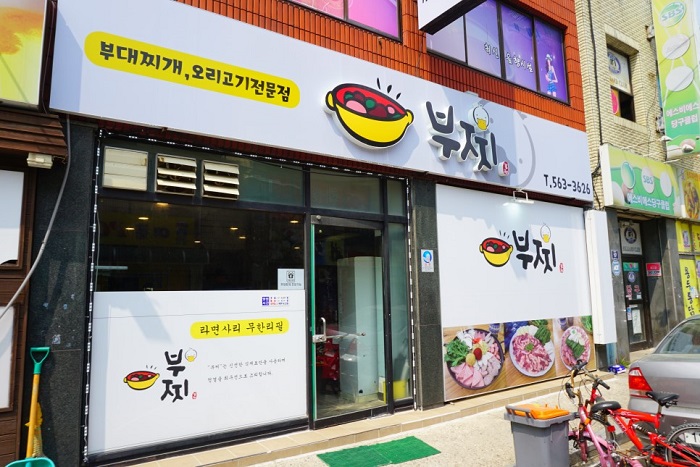
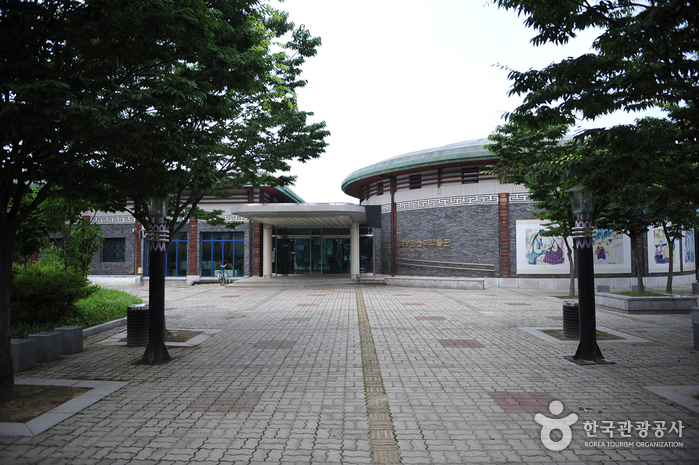
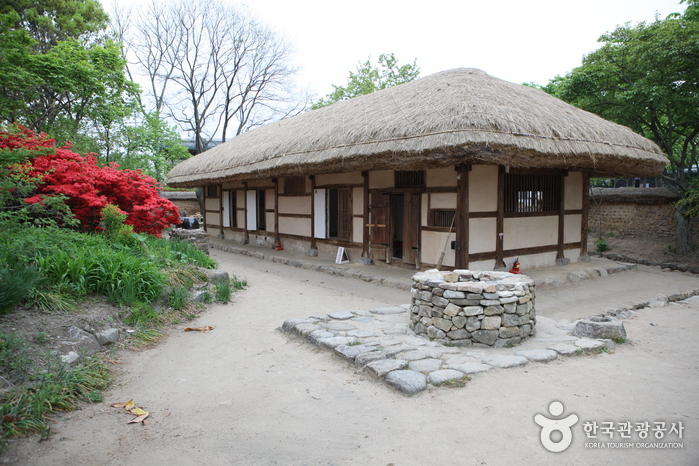
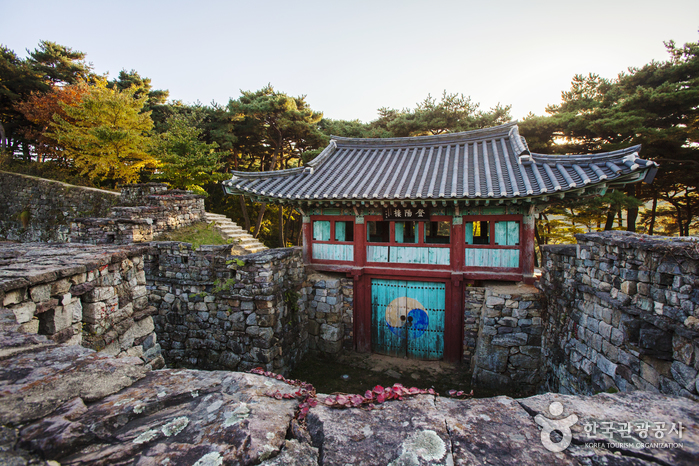
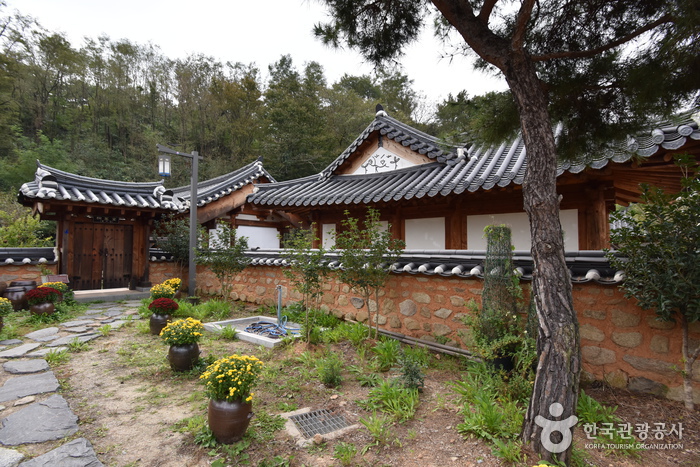

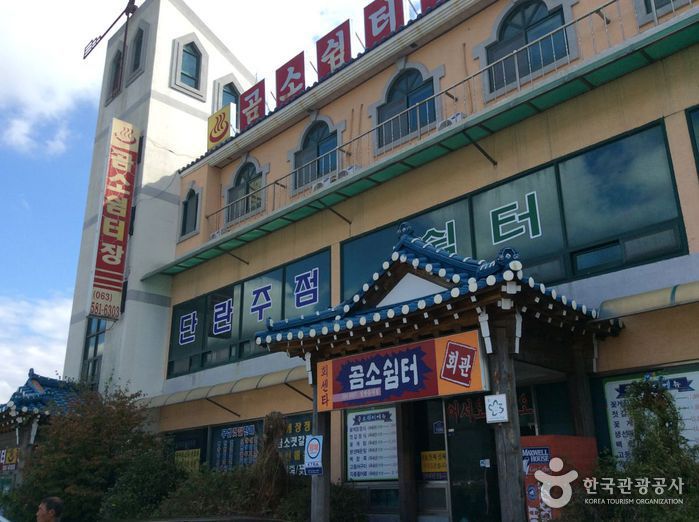
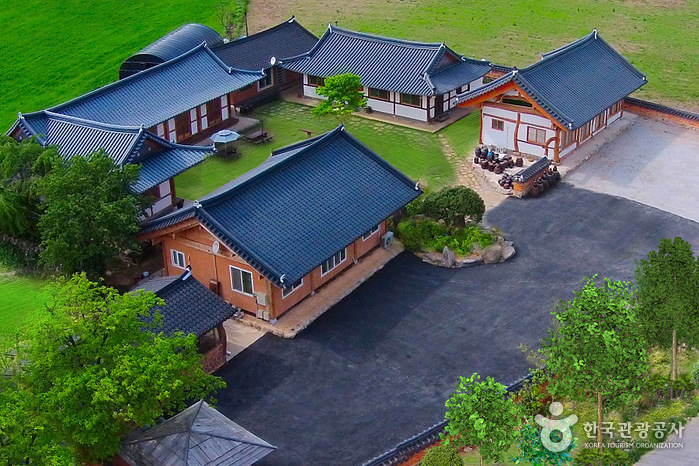
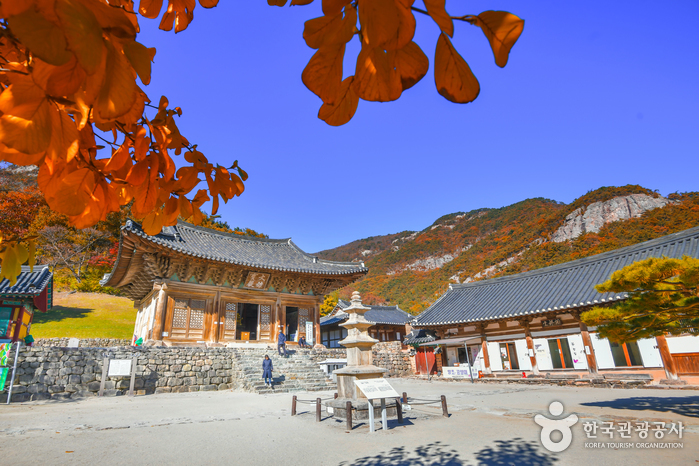
 English
English
 한국어
한국어 日本語
日本語 中文(简体)
中文(简体) Deutsch
Deutsch Français
Français Español
Español Русский
Русский